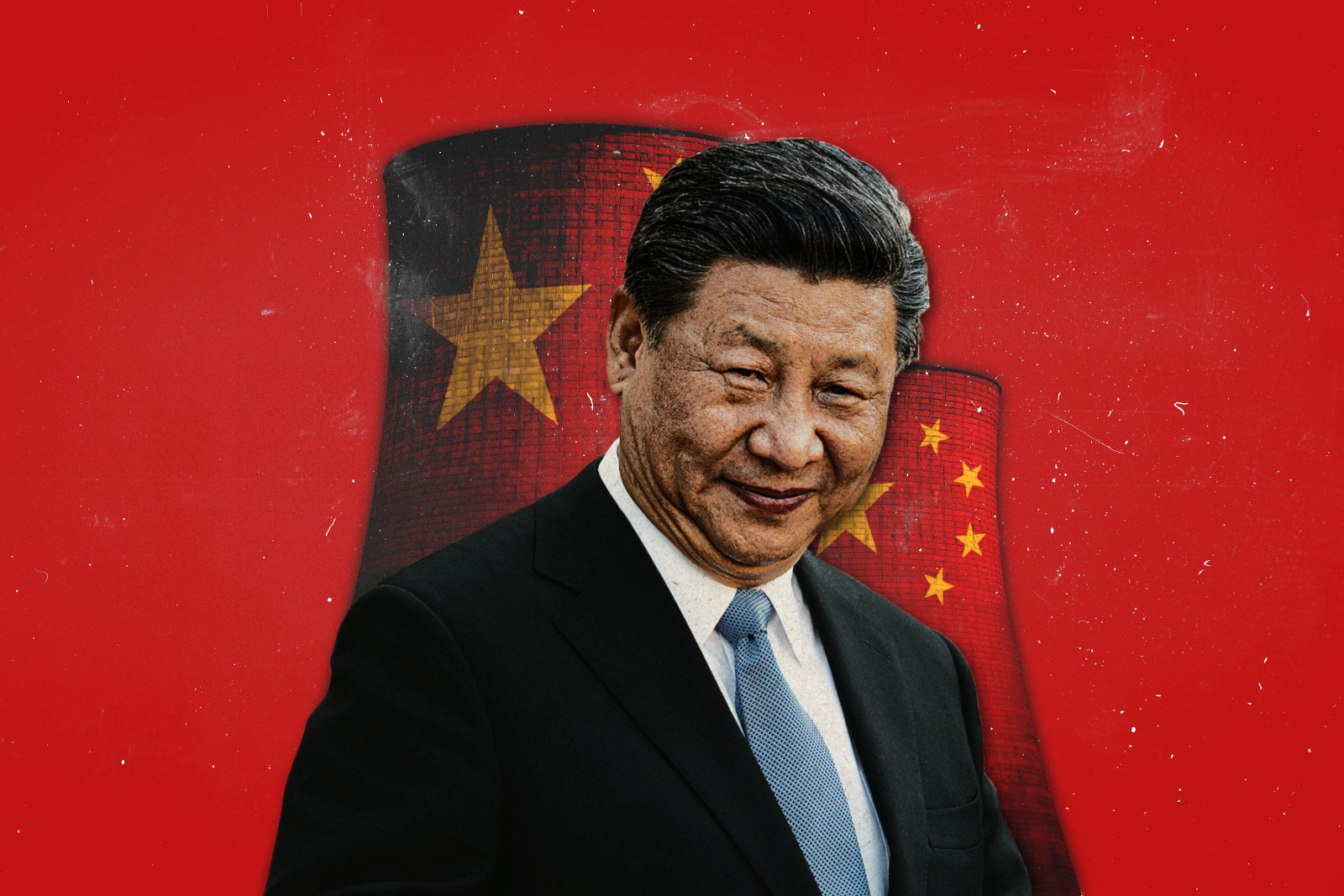
How China has Pulled Ahead in the Global Nuclear Race
The global sprint towards more affordable and secure nuclear energy is intensifying, with China now setting the pace.
In the pantheon of trillion-dollar industries, sustainable energy reigns supreme. Nations and corporations across the globe are vying for supremacy in the realm of energy, with new nuclear fission technologies and the holy grail of controlled nuclear fusion within their sights.
A consortium of reactor suppliers from regions as diverse as North America, Japan, Europe, Russia, and China, are diligently working on over a dozen cutting-edge nuclear reactor designs. These designs are at various stages of development, from research and design to advanced planning and active construction.
Leveraging technological expertise from the United States, France, and Russia, China has carved out a strategic edge with its cutting-edge thorium-powered molten salt nuclear reactor, situated in the stark expanses of the Gobi Desert. This groundbreaking endeavor, coupled with an ambitious $440 billion nuclear development strategy and the expansive Belt and Road Initiative, is catapulting China into the forefront of nuclear innovation, leaving countries like the United States grappling to keep pace.
A pivotal element of this global nuclear chess game is China’s operational thorium-powered molten salt reactor. The term “operational” is significant; in the realm of avant-garde nuclear projects, concrete results often lag behind ambitious announcements.
China initiated the construction of the pilot 2 MWt thorium reactor in September 2018, achieving completion in 2021. It has recently become fully commissioned and operational. This plant boasts multiple advantages over traditional uranium fission reactors, including enhanced safety, minimized waste, and improved fuel economy. Additionally, it requires significantly less water for cooling, enabling placement in locations not contingent upon proximity to large bodies of water.
By 2030, China plans to scale up this technology with a 373 MWt reactor.
Thorium’s role in nuclear power is not exclusively a Chinese revelation; it was American innovation that laid the foundation for the Chinese facility. The Tennessee-based Oak Ridge National Laboratory, which is renowned for its part in the Manhattan Project, was instrumental in the early development of thorium reactors. They even successfully operated a thorium reactor in the 1960s and produced comprehensive designs for a commercial plant. Despite this, the U.S. military and energy sector eventually favored uranium.
Thorium offers a complementary alternative to uranium, which remains the only naturally occurring fissile material. Uranium can ‘ignite’ a thorium reactor, setting in motion a fission process that splits atomic nuclei to release energy. In contrast to uranium, thorium reactors utilize their fuel more completely, meaning they produce little to no waste, thus addressing the challenge of long-lived nuclear waste.
Other nations, including France, Germany, India, Japan, the UK, and the Netherlands, have experimented with thorium-based solutions, encountering various obstacles. India, for instance, aims to fulfill 30% of its electricity needs with thorium reactors by 2050. China, with its abundant thorium reserves and strategic plans, contends that it can harness this technology to meet its energy needs for an estimated 20,000 years.
In what seems to be a reversal of roles, the United States, once the vanguard of nuclear energy, now finds itself playing catch-up. Private American entities are stepping up to the challenge, with one of the most notable ventures being that of billionaire Bill Gates’ company, Terrapower. This firm has begun constructing a revolutionary $4 billion Natrium reactor in Wyoming. This facility, powered by high assay low enriched uranium, faces delays due to the current reliance on Russian HALEU. Terrapower is hopeful that the U.S. Department of Energy will repurpose some of its stockpile of weapon-grade uranium to fuel this innovative project.
From a wider perspective, China’s aggressive nuclear expansion offers both domestic and international strategic benefits. By 2030, Chinese firms are projected to generate revenues of $145 billion, creating approximately five million new jobs within this sector alone. These projections assume a modest 20% market share among the 41 Belt and Road nations looking to enhance their nuclear energy capabilities.
With China’s financing strategies, governmental support, and domestic supply chains, reaching these targets seems more than plausible, particularly as China intends to market smaller thorium reactors as a gateway into the nuclear energy market. Such deals could bind nations to Chinese technology for decades. Notably, many of these prospective nuclear power nations are in Africa, where China has steadily established a strong presence. The International Atomic Energy Agency (IAEA) is actively evaluating or has already determined the nuclear readiness of several African nations, with others considering the option.
China’s nuclear endeavors are not merely an exercise in economic expansion; they represent a robust projection of strategic power and a means to deepen its political and trade ties across the globe.
As the nuclear sector advances, the ultimate quest remains the creation of a functional nuclear fusion reactor, akin to a terrestrial sun. Launched in 2006, the International Thermonuclear Experimental Reactor (ITER) project in southern France, supported by 35 countries but led by seven—China, the EU, India, Japan, Russia, South Korea, and the U.S.—embodies this ambition. Yet, despite over $22 billion invested and a litany of complications, ITER’s destiny hangs in the balance.
Simultaneously, these nations are fervently pursuing their fusion reactors, committing staggering sums to this end. The United Kingdom, for instance, has pledged up to £650 million through 2027 for fusion advancements. In a similar vein, Germany has earmarked one billion euros for fusion research over five years, signaling a global race to harness this transformative energy source.
The past year has witnessed pivotal breakthroughs, reminiscent of the Wright Brothers’ inaugural flight. America’s Lawrence Livermore National Laboratory made significant strides with powerful lasers to facilitate fusion and energy production in December. China, observing these advancements, has galvanized its physicists to intensify their efforts, culminating in the August announcement by the China National Nuclear Corporation (CNNC) of their new-generation “artificial sun,” marking a milestone in plasma current capacity.
America, in pursuit of this grand yet elusive prize, is enlisting its private sector, including industry heavyweights and innovative startups like Helion Energy—co-founded by OpenAI’s Sam Altman—to develop pilot fusion plant designs. The Department of Energy has also invested $46 million in eight companies to spearhead fusion development over an initial 18-month phase.
The stakes of this race are monumental, with the global energy market valued at $15 trillion and the potential for a fusion-powered market reaching $40 trillion, per Bloomberg’s assessments.
The pursuit of nuclear fusion transcends mere scientific endeavor—it embodies fiscal foresight and political determination. Recognizing a lag in this area, the U.S. is bolstering its efforts, reminiscent of Popeye’s spinach-powered revival, through strategic initiatives and competitive countermeasures initiated during the Trump presidency and continued under the Biden administration. This includes the March 2022 White House Fact Sheet outlining a bold vision for commercial fusion energy and recent export controls tightening against China in August.
A critical hurdle for America in this international contest is the pace of completion. The U.S. grapples with protracted delays and cost overruns in its nuclear projects, unlike China’s thorium reactor project, which concluded three years early in August 2021—a feat acknowledged in the latest Pentagon report that concedes China’s rapid nuclear expansion.
The lesson for those acquainted with China is clear: do not underestimate its capabilities—a sentiment that U.S. policymakers often neglect.
To truly compete, the U.S. may need to embrace a level of collaboration and investment reminiscent of the Manhattan Project, combining both public and private sector efforts and perhaps extending to partnerships with allies like the UK and Germany—the latter committed to phasing out coal power by 2038.
As the race intensifies, what’s certain is the fierce competition ahead, with global energy dominance at the forefront of this nuclear charge.
